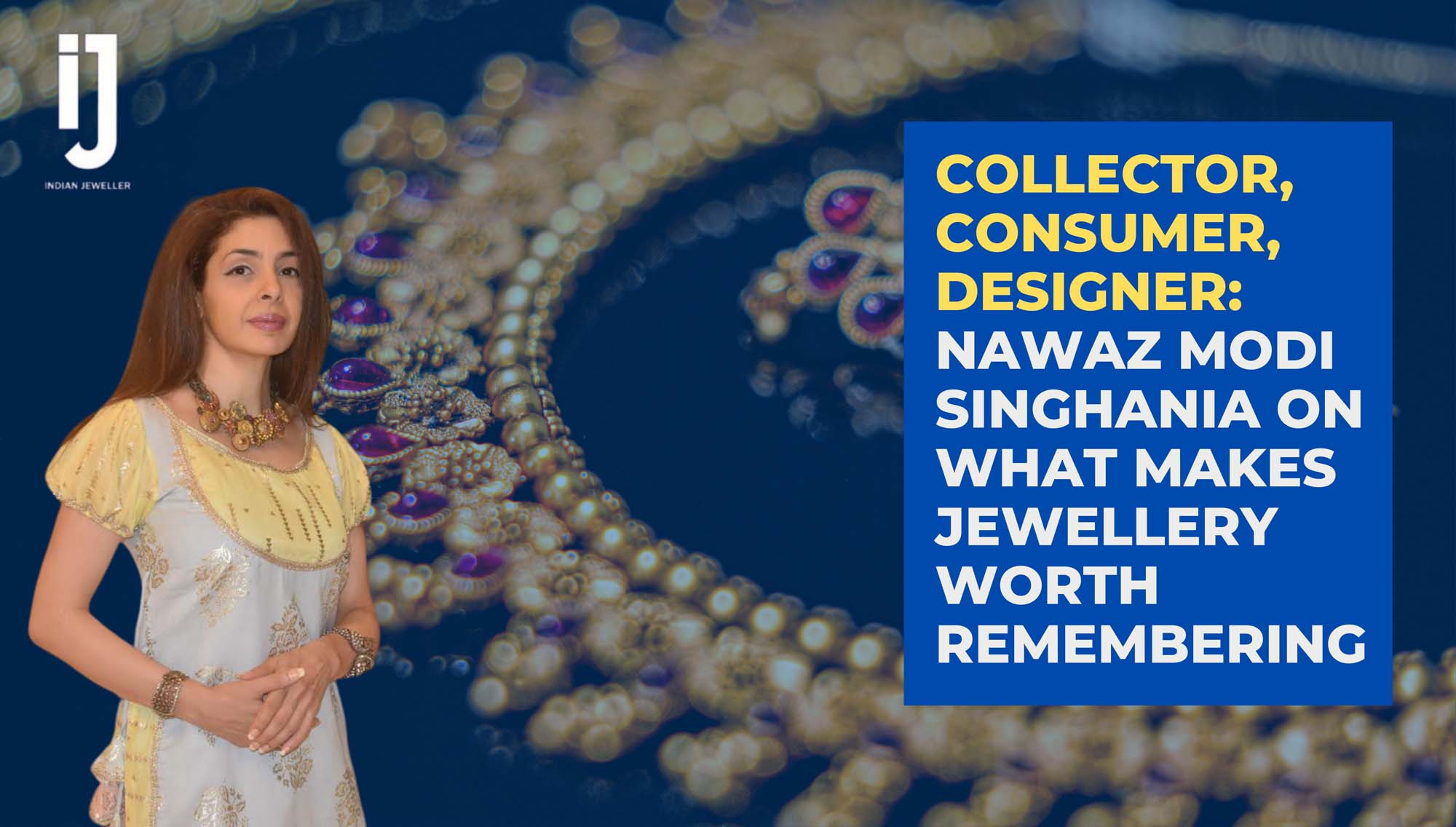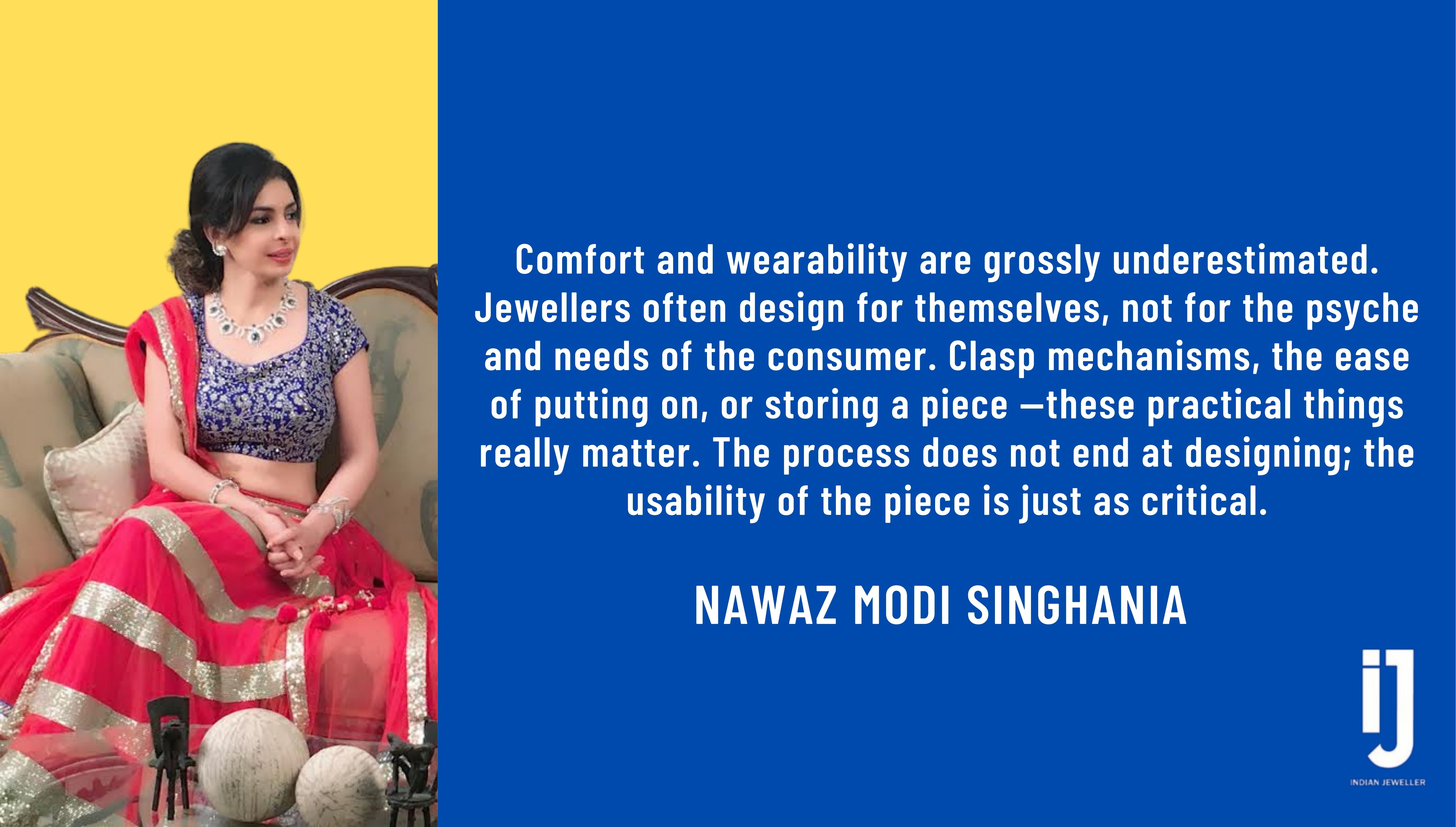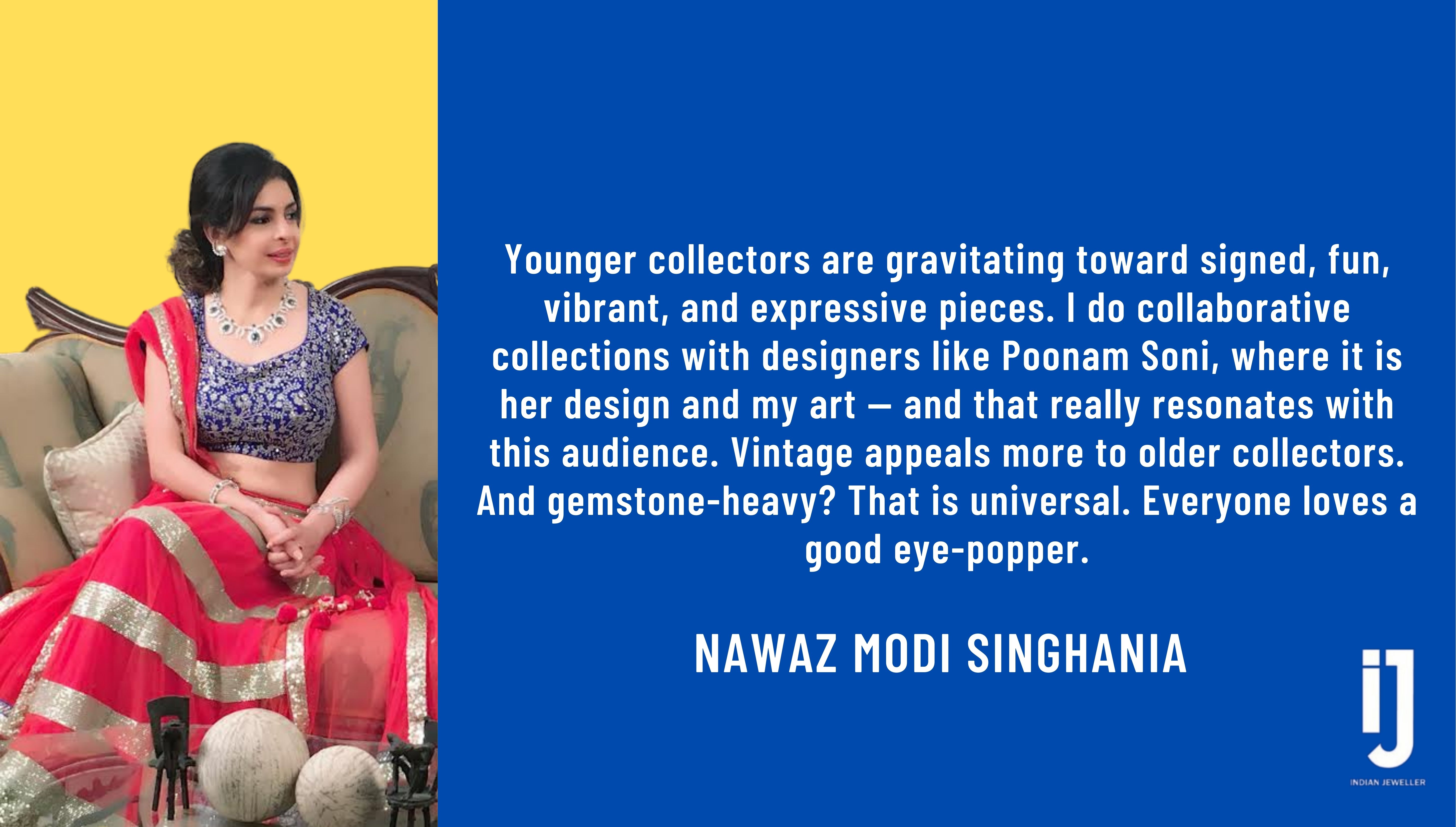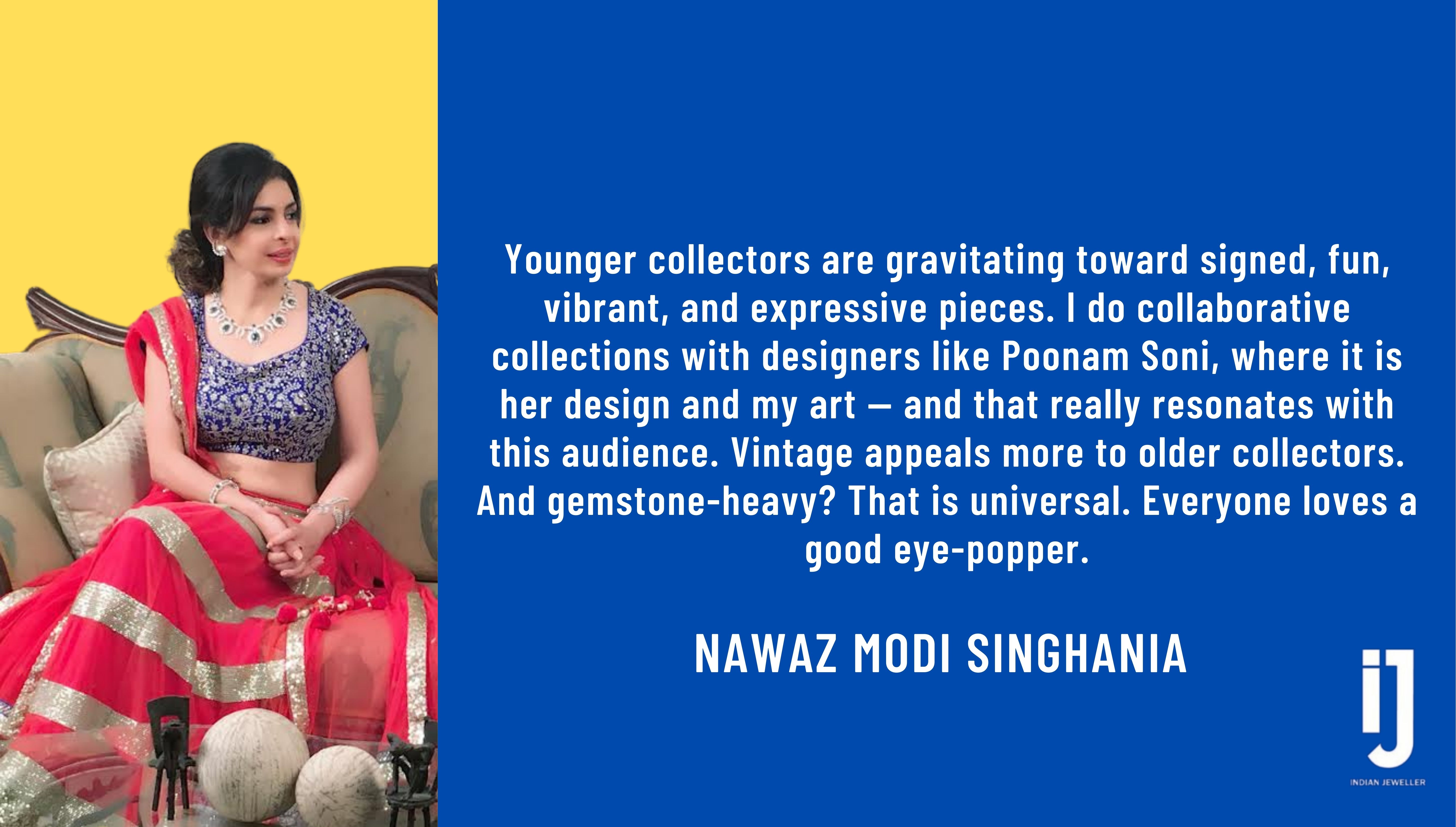As a collector, designer, and end-consumer, Nawaz Modi Singhania offers valuable insights into what today’s discerning buyers truly seek — wearability and emotional value, as well as legacy and versatility. Her perspective is a reminder to jewellers that design must balance aesthetics with comfort, and storytelling with substance

Nawaz Modi Singhania does not just wear jewellery — she designs it, curates it, and lives with it. Her perspective is layered: part aesthete, part pragmatist, part legacy builder. In this exclusive conversation with Indian Jeweller, she reflects on what draws her to a piece — it could be history, technique, emotion or sheer necessity — and what jewellers often overlook in their pursuit of grandeur. With a collection that spans ancestral heirlooms, contemporary creations, and custom-designed stunners, Singhania offers a deeply personal take on timelessness, storytelling, and the evolving meaning of adornment.
Q: As a jewellery designer and consumer, what draws you to a piece — technique, rarity, history, or something more intangible?
A: All of those factors matter, but to different degrees, depending on the piece. Sometimes, it is the value of a solitaire. At other times, it is the art form, the ingenuity, or simply how deeply a piece stirs something within you, grabs your heart and soul. Then again, it might be practical: I need a pair of solitaires, or a ruby bracelet to go with my wardrobe. It could be emotional or aesthetic — or just that something essential is missing from the collection.

Q: What are the markers of timelessness you look for when adding a new piece to your collection?
A: My collection is very varied — some pieces are contemporary, some Art Deco, some historic and ancestral, including a lot of Parsi jewellery. I also design a lot of pieces. Solitaires, earrings, and rings tend to be timeless. Others are so remarkable, so memorable, that they are hard to repeat —you wear them once, and then they rest for a long time. I think a great collection needs a mix: funky, eclectic, and plain vanilla. Different occasions call for different kinds of jewellery, and a truly outstanding collection reflects that.
Q: You once said you would never wear lab-grown diamonds. Has your view changed?
A: It has not. The market has changed immensely — lab-grown diamonds have created their own space, and have certainly impacted the value of natural diamonds. But personally, I still would not wear them. I have no need to, and no inclination either.
Q: From the lens of a serious collector, what do you wish more jewellers understood?
A: Comfort and wearability are grossly underestimated. Jewellers often design for themselves, not for the psyche and needs of the consumer. Clasp mechanisms, the ease of putting on, or storing a piece —these practical things really matter. The process does not end at designing; the usability of the piece is just as critical.

Q: There is often tension between wearability and the wow factor. What do you lean towards?
A: I do no choose between them. A good collection needs both. Solitaires and simpler bracelets are my everyday “go-to”s. But the wow pieces — the unforgettable neckpieces, the head-turners —those are equally important, even if they are worn rarely. It depends on the requirement, the stone, and often, the legacy you are trying to build. For instance, when I design something for myself, I am often thinking of my daughters too — what should go into their collection. So, I will plan pieces with specific stones or categories in mind.
Q: Should high jewellery be about occasion, investment, or emotion? What drives your purchases?
A: Honestly, no one wants to give up any of the three. A piece should work for an occasion, be a sound investment, and have emotional resonance. Depending on the moment, one of these may dominate —but the best pieces usually carry all three.

Q: What do jewellers often underestimate when it comes to bespoke design?
A: Ease and comfort again. The ability to co-design. Listening to the client’s preferences. Making jewellery easy to wear, remove, and store. These things are critical, and designers often miss how much they matter.
Q: How important is storytelling to you when you buy or wear a piece?
A: It is important. But I do not hear stories from jewellers often — though when I do, they certainly add to the experience. The pieces I design or curate often have my own stories behind them, and that makes them even more meaningful.
Q: Are you noticing growing interest in specific categories — like signed, vintage, or gemstone-heavy designs?
A: Absolutely. Younger collectors are gravitating toward signed, fun, vibrant, and expressive pieces. I do collaborative collections with designers like Poonam Soni, where it is her design and my art — and that really resonates with this audience. Vintage appeals more to older collectors. And gemstone-heavy? That is universal. Everyone loves a good eye-popper.
Q: What is the direction for jewellery in the decade ahead? Boldness or restraint? Colour or clarity? Statement or subtlety?
A: There will always be a mix. Some people want clean, minimalist elegance; others want high-value stones, small, but perfect in quality. And then there are those who love bold, large stones, regardless of the grading. The market will always have a spectrum of mindsets, and jewellery will reflect that diversity.
Be the first to comment